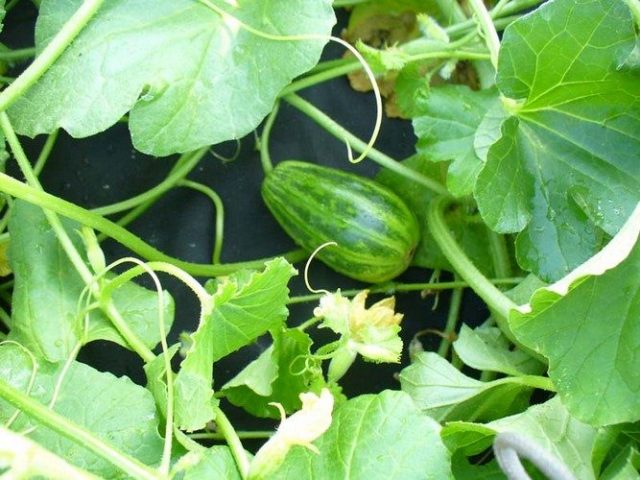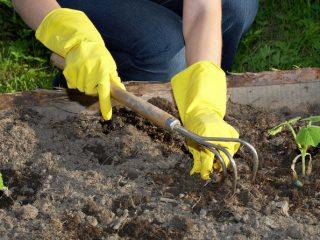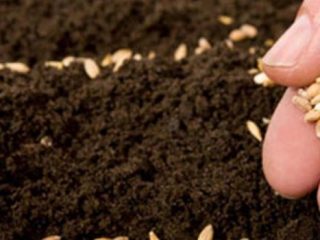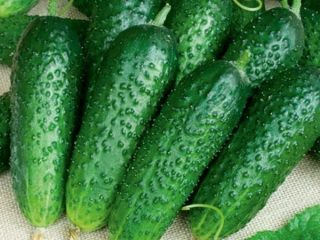Content
Modern lovers of agricultural work experiment and often grow various hybrids of vegetables. Larton cucumber is an exotic plant that combines the properties of melon and cucumber. This hybrid is quite unpretentious. Cucumber is easy to grow.
Description of Larton cucumber
Despite the fact that the Larton cucumber appeared on household plots not long ago, it was enjoyed by many summer residents. The hybrid can increasingly be seen among ordinary vegetable plants. Its appearance combines the characteristics of its ancestors.
Larton F1 cucumber belongs to the pumpkin family. The plant is about 2 meters high and has fairly strong stems and many strong lashes. The developed root system is located shallow in the ground. The leaves are large, dark green. The flowers are similar to cucumber flowers, but larger.
The vegetable pulp is juicy, creamy in color with a small content of seeds.
If the vegetable is not ripe, it has a green, slightly pubescent skin, a cucumber taste and aroma. And after ripening, the fruit becomes like a watermelon, and the taste is like a melon.
Cucumber Larton is an early ripening hybrid. The first harvest is harvested 45-55 days after planting.Moreover, experienced farmers collect 10-20 fruits from one bush.
Growing cucumber Larton F1
Growing and caring for Larton cucumbers is simple and does not require deep knowledge of agricultural technology. Gardeners say that you need to care for a hybrid in almost the same way as ordinary cucumbers.
Preparing the planting site and seeds
Cucumbers are grown in seedlings and without seedlings. The planting method depends on the region. In the southern regions, seeds can be planted directly in open ground when it warms up enough. In central and northern areas, it is better to use seedlings and plant them in polycarbonate greenhouses.
In the first ten days of April, seeds are prepared. They are placed in any growth stimulator and kept in solution for the time described in the instructions. Then, for further germination, cotton material folded in half is placed in a shallow container. Place the seeds inside and fill everything with water so that the fabric is slightly moistened. Place in a plastic bag. Make sure the fabric is constantly damp.
Sometimes the manufacturer himself performs all operations to prepare seeds for planting. Then the summer resident can only place them in the prepared soil.
After the sprouts appear, each seed is placed in a separate container filled with fertilized soil. The pots are placed in a warm place. After emergence of seedlings, watering is carried out as necessary.
To plant cucumbers, choose an unshaded and windproof place.
The soil must be loosened and able to retain moisture. The plant requires constant watering.
Caring vegetable growers prepare a place for growing Larton F1 cucumbers in the fall. The soil is dug up with humus or compost and fertilized with ammonium nitrate or potassium sulfate. In the spring, all that remains is to remove the weeds and loosen the beds.
Landing rules
Dig shallow holes in the soil, keeping a distance of about 20-30 cm between them, and water them. Then each seedling, along with a lump of earth, is carefully removed from the pot and placed in the recesses. The roots are covered with humus.
Watering and fertilizing
The Larton F1 cucumber is unpretentious, but it also requires care. This is watering and fertilizing. For active growth and formation of ovaries, the hybrid requires a lot of moisture and nutrients. Therefore, vegetable growers should follow these recommendations:
- Irrigate only with settled warm water.
- During periods when the cucumber plant is actively growing and many ovaries begin to form, the bushes are watered daily or every other day, but not abundantly. This allows the root system to absorb all the moisture that does not stagnate in the ground.
- Reduce watering during fruit ripening. This improves their taste and increases their sugar levels.
- Every 2 weeks, combine watering the cucumber with fertilizing with a solution of manure or saltpeter.
After irrigation, the soil around the plants needs to be loosened so that crust does not form on the beds, and weeds must be removed.
To maintain optimal soil moisture, place a layer of mulch near each cucumber bush.
Formation
To improve the yield of Larton F1 cucumber, pinch out the vines and remove excess ovaries. The formation of a bush should be carried out taking into account the following rules:
- When the main stem reaches 25 cm, it should be pinched. This will stop growth and stimulate the formation of shoots on the sides.
- The growth of lateral lashes is stopped above the 7th leaf. No more than 3 ovaries are left on each.
- Shoots lying on the soil need to be buried in the ground in 2-3 places to form additional roots.
The formation of a bush, carried out according to all the rules, guarantees the production of large fruits in a short time.
Protection from diseases and pests
Larton F1 cucumber is disease resistant. But with high soil moisture and dense plantings, it is affected by fungal diseases. Flower petals and ovaries rot.
Disease prevention: spraying with fungicides containing copper. Fitosporin is also used. You can take 15% Bordeaux mixture.
Larton F1 cucumber is not attacked by pests. But when fully ripe, the fruits become fragrant and attract birds. To protect, the beds are covered with a layer of mesh or repellers are installed.
Harvesting
1.5 months after planting, you can already enjoy the first fruits of the Larton F1 cucumber. At this time they resemble cucumbers. Or you can wait for complete ripening and harvest something like a melon. Moreover, vegetables ripen continuously throughout the summer season.
The fruits are stored for 1.5 months in a dark and ventilated place where the temperature is maintained at +3-4°C.
Conclusion
Larton cucumber is an agricultural crop that even an inexperienced summer resident can grow on his own plot. You just need to follow all the cultivation rules, which are similar to the rules for growing cucumbers.











